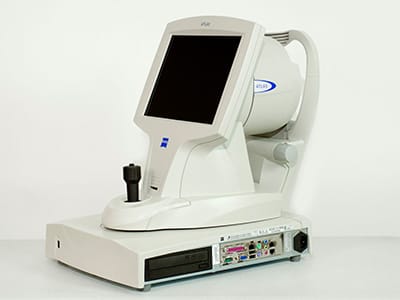Carl Zeiss Meditec is an international giant in the field of manufacturing and distributing high-end optics and optical products.
Zeiss Atlas 9000 is Simply Accurate with Greater Productivity through Connectivity. The Zeiss Atlas 9000 Corneal Topographer is one of the best diagnostics instruments that enable eye care professionals to correctly and precisely measure the curvature of the cornea and to facilitate the production of very clear topographical images. The design of the equipment is such that it has the ability. Zeiss Atlas 995 Manual Arts Harry Potter 6 Sub Indo 360p Animeindo Shingeki No Kyojin S1 Eps 23 Sub Indo; Wired That Way: A Comprehensive Guide to.
The greatest advantage of corneal topography is its ability to detect irregular conditions of your cornea invisible to most conventional testing. And because the computer can save your exam information, Dr. Seibel can monitor any changes to your cornea and/or your corneal stability over time.
Corneal topography is a computer assisted diagnostic tool that creates a three-dimensional map of the surface curvature of your cornea. The Zeiss Atlas 995 Topographer is the most innovative tool of its kind.
Zeiss atlas 995 manual. 5/3/2017 0 comments surplus process equipment lab. Thermo jarrell ash, aa- scan 4, model- scan 4, date- 3/9. Zeiss Atlas 995 Manual High School. 7/12/2017 0 Comments Maria Luisa Genito Apice Maria Luisa. Vittorio Emanuele, 1. Riviera del Conero. La Casa del Ghiro Pimonte. For eyes with prior radial keratotomy, averaging the 1 mm, 2 mm, 3 mm and 4 mm annular power rings of the Numerical View of the 995, 994, and 993 Zeiss Atlas topographer (right) will typically give a useful estimate of central corneal power.


How does it work?

The cornea (the front window of the eye) is responsible for about 70 percent of the eye’s focusing power. An eye with normal vision has an evenly rounded cornea, but if the cornea is too flat, too steep, or unevenly curved, less than perfect vision results.

The Atlas 995 corneal topographer consists of a computer linked to a lighted bowl that contains a pattern of rings. During a diagnostic test, you would sit in front of the bowl with your head pressed against a bar while a series of data points are generated. Computer software digitizes these data points to produce a printout of the corneal shape, using different colors to identify different elevations, much like a topographic map of the earth displays changes in the land surface. This is a painless and brief non-contact test.
What do the colors mean?
Corneal mapping reveals patterns indicating conditions that may affect the selection of the best type of vision correction or treatment for you. These patterns are color-coded according to highs and lows – red being the highest and purple being the lowest, in a continuous rainbow order. A few examples of corneal color maps are shown below.
- This is a typical round cornea with a shape that changes uniformly from the center to the edge
- This is a typical astigmatism where the cornea is not round and has two balanced but different focusing powers.
- This is a asymmetric astigmatism where the cornea is not round and the focusing powers are not balanced.
- This is a keratoconus is a condition where an area of the cornea assumes a cone like shape.
Corneal topography produces a detailed, visual description of the shape and power of your cornea. This type of analysis provides Dr. Seibel with very fine details regarding the condition of your corneal surface. These details are used to diagnose, monitor, and treat various eye conditions. They are also used in fitting contact lenses and for planning surgery, including LASIK.
Zeiss Atlas 995 Manual Instructions
For LASIK the corneal topography map is used in conjunction with other tests to determine exactly how much corneal tissue will be removed to correct vision and with what LASIK pattern.